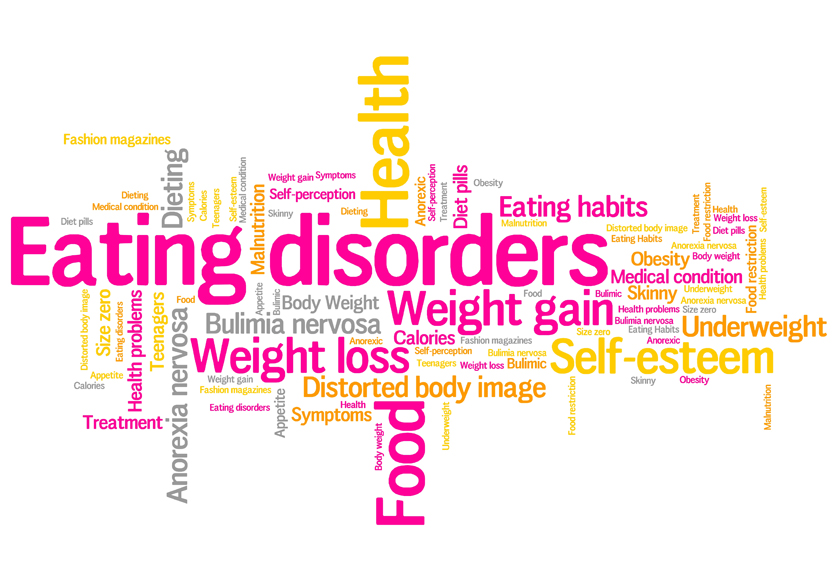- Behavior
- Health
- Parenting
How to recognize eating disorders

In this article, you’ll find answers to questions like:
1. How common eating disorders?
2. What are eating disorders?
3. What are the types of eating disorders?
Eating disorders continue to be a problem for pre-teen and teen boys and girls, particularly in this age of Instagram, TikTok and Snapchat.
About 13 percent of girls, and about 6 percent of boys, develop an eating disorder while growing up, according to a study by the National Eating Disorders Association.
Eating disorders are a mental illness. The disorders have serious consequences for health, productivity and relationships. Anorexia nervosa, bulimia nervosa and binge eating are not fads, phases or lifestyle choices.
The issue has grown across the world and all social classes, says Joann Hendelman, clinical director of The National Alliance for Eating Disorders. The national non-profit organization, based in West Palm Beach, provides programs and activities aimed at outreach, education and early intervention of eating disorders.
“Eating disorders are more common than autism, breast cancer and Alzheimer's disease, more deadly than drunk driving, and even more costly than depression and anxiety,” says Hendelman, a licensed clinical psychologist.
WHAT ARE THE TYPES OF DISORDERS?
Common eating disorders include anorexia nervosa, bulimia nervosa and binge eating. Anorexia causes the highest mortality rate among psychological disorders. The alliance offers detailed information about the main types and long-term health implications.
Discomfort during mealtimes, over-analysis of calories and excessive amount of time spent worrying about food, weight or body image may be signs of the problem, says Henah Gupta, past president of South Florida’s chapter of The International Association of Eating Disorders Professionals Foundation.
Common consequences of anorexia include bone weakening, brittle hair and skin, anemia, weakness, gastrointestinal issues and low blood pressure. Bulimia can cause swollen glands, dental complications, gastrointestinal issues, kidney problems and dehydration, according to Gupta’s website.
“People with eating disorders may experience shame or guilt within themselves,” she says. “Their relationship with food is usually anxiety-ridden and difficult to manage. Eating may be a stressful event for them.”
Symptoms of food restriction or avoidance, emotional eating, compulsive eating, compensating for eating with excessive exercise or some method of attempting to reduce the guilt for eating may be clues, says Gupta, who has a doctorate in clinical psychology.
“A person's self-esteem may be low, and the amount of value and importance placed on their body can become astronomical,” she says.
Hendelman cautions family members and caregivers of teens to watch for simultaneous conditions such as mood and anxiety disorders. Drug or alcohol abuse, self-harm, such as cutting, and suicidal thoughts and behaviors are other symptoms.
SOURCES:
• Joann Hendelman, clinical director, National National Alliance for Eating Disorders for Eating Disorders
• Henah Gupta, past president, South Florida’s chapter of The International Association of Eating Disorders Professionals Foundation
You May Also Like
-
- Behavior
- Education
- Parenting
Help your new middle schooler tackle challenging transition
Middle school is one one of the most difficult ages. Children may be experimenting with drugs, sex and alcohol, or with self-harm, such as cutting. So tune into your child's emotio …
Read More -
- Behavior
- Health
- Parenting
Should I worry my moody teen is sulking too long? Find out here
Periods of teenage angst typically last a few days. However, chronic or prolonged behavioral and mood changes can indicate a mental health concern. If you're concerned about your t …
Read More
Related resources
-
- Behavior
- Health
- Other
The Alliance for Eating Disorders Awareness of Palm Beach County
Services, information and intervention related to eating disorders
561-841-0900 Website Email -
- Behavior
- Health
- Other
National Alliance on Mental Illness Palm Beach County
Family-to-Family — free 12-session course for caregivers of family members with severe mental illness
561-588-3477 Website Email -
- Behavior
- Health
- Parenting
Children's Behavioral Health Collaborative - Palm Beach County
A collaboration of five local mental health agencies that assess and treat children's serious behavioral, emotional or mental health problems
561-244-9499 Website
